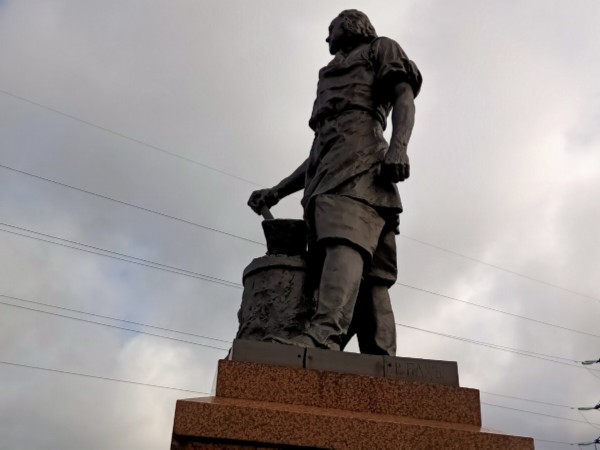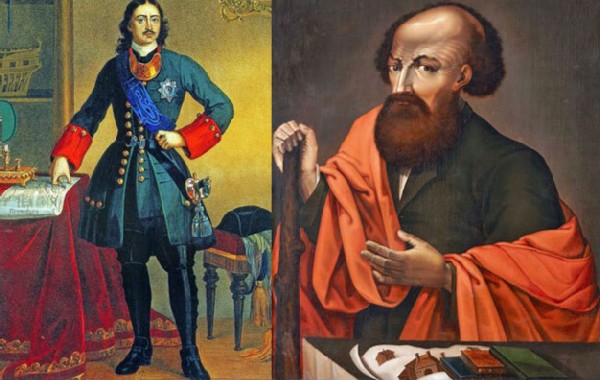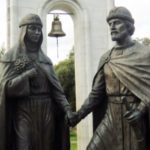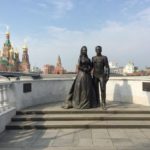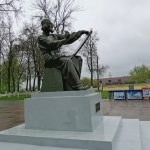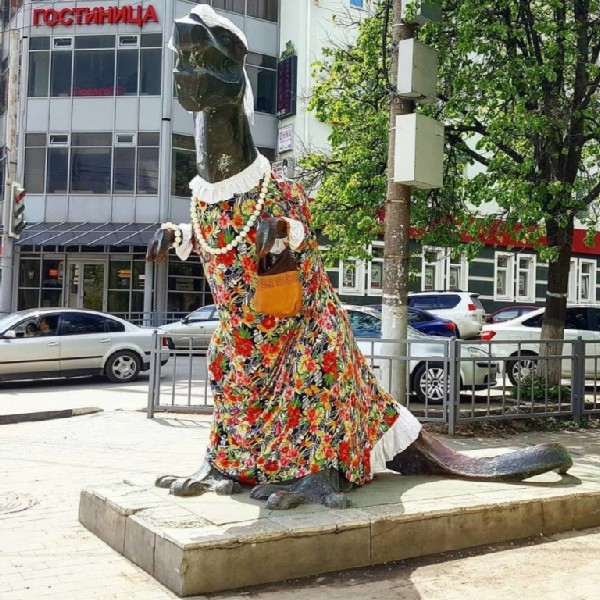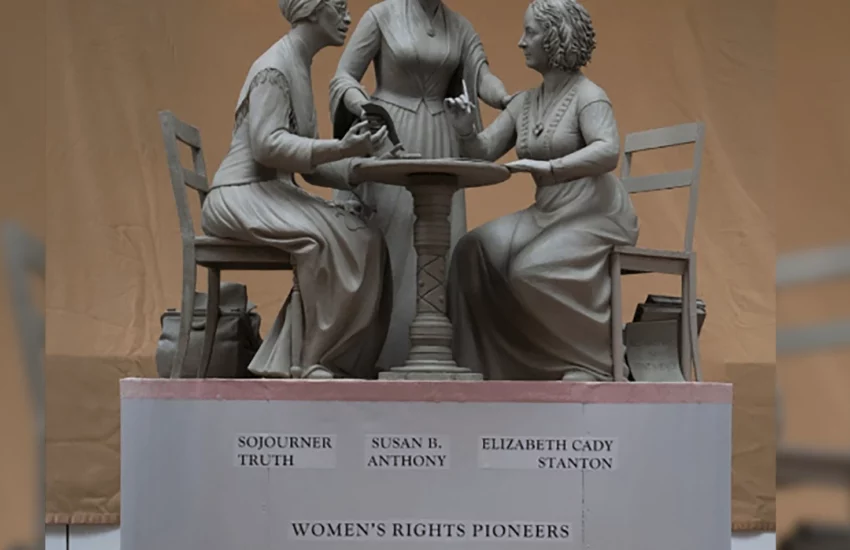Monument to Peter I in Tula, Russia
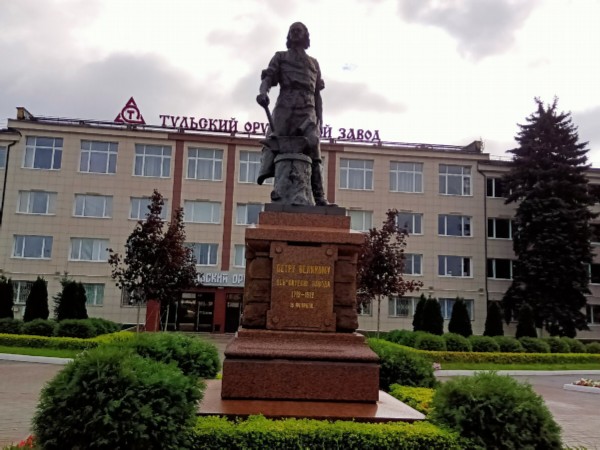
It is no coincidence that Tula is considered the arms capital of Russia.
In 1595, arms production began in Tula. Tsar Fyodor Ivanovich freed the Tula blacksmiths from taxes and ordered them to make state-owned weapons. A blacksmith’s settlement was located across the Upa River, the inhabitants of which produced cold steel and firearms. At the end of the 17th century, Tula became the most important commercial and industrial complex. Nikita Demidov took up the production of weapons, later the Batashevs and Mosolovs created weapons workshops. In 1711, Tsar Peter I sent talented young men who knew blacksmithing from all over Russia to Tula. Monument to Peter I
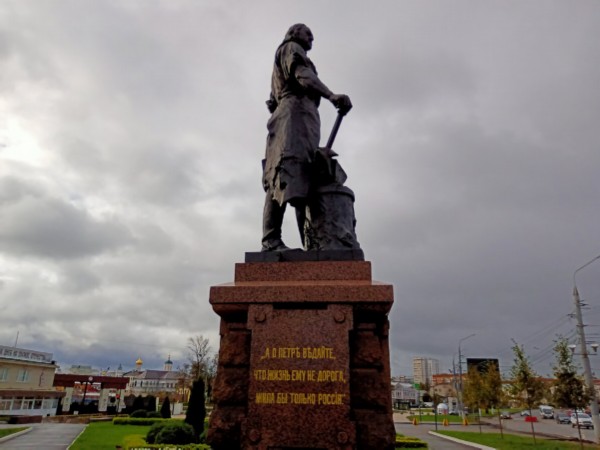
In February 1712, Peter the Great issued a decree on the construction of a state-owned arms factory on the Upa River in Tula, so that “guns, fuzei, pistols can be drilled and sharpened, and broadswords and knives can be sharpened with water.” On the street Sovetskaya, a monument to Peter I was erected in front of the plant management building. Its installation was timed to coincide with the 200th anniversary of the Tula Arms Factory (TOZ). In 1909, a meeting was held at TOZ on a voluntary subscription to the erection of the monument. The signatories should have been during the 1910-1911 biennium. from their earnings “deduct half a kopeck from any received ruble.” Such volunteers turned out to be 70% of the company’s employees.
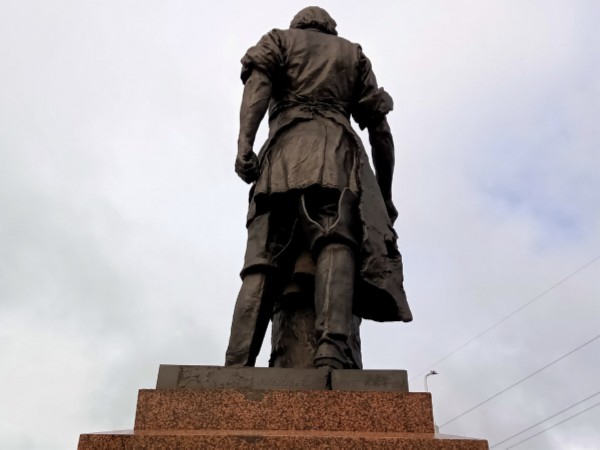
The author of the project of the Monument to Peter I was Robert Bach.
Prior to that, he was the author of projects for such monuments as Peter I in Reval (Tallinn), Alexander III in Feodosia, M.I. Glinka in Moscow and others. These projects were very successful. Robert Bach arrived in Tula, got acquainted with the inhabitants of the city and Tula gunsmiths and decided to get away from the ceremonial image of Peter I. The image of the tsar-worker-gunsmith was created, in a shirt with rolled up sleeves, in a blacksmith’s apron by the anvil.
The monument to Peter I was erected on April 28, 1912, on the day of the celebration of the 200th anniversary of the creation of the imperial arms factory. The celebrations were accompanied by a visit to Tula by Prince Sergei Mikhailovich and mass festivities. On the eve of the anniversary, the workers of the plant received a bonus in the amount of daily wages.
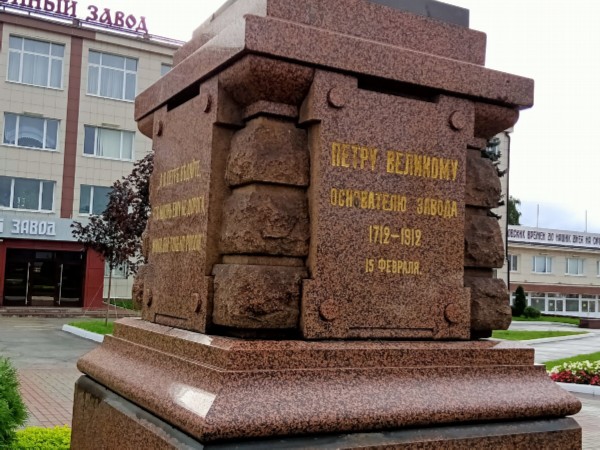
The streets of the city were decorated with flags and electric illumination. Initially, the monument was erected on the banks of the Upa, on the factory embankment, with its back to the river, facing the factory. In 1923, the monument was dismantled and sent to the warehouse, but 3 years later, by order of the chairman of the Supreme Council of National Economy, Pyotr Alekseevich Bogdanov, the monument was returned to its original place.
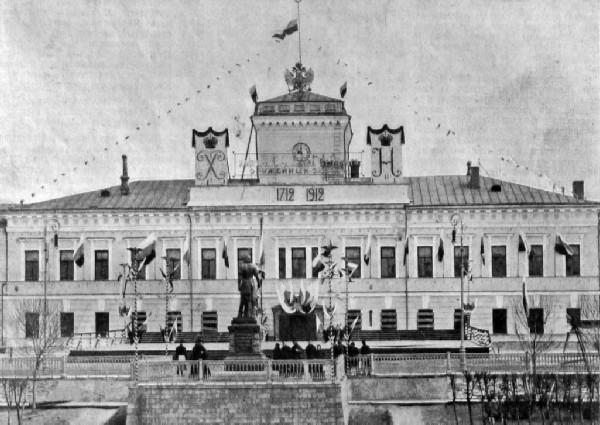
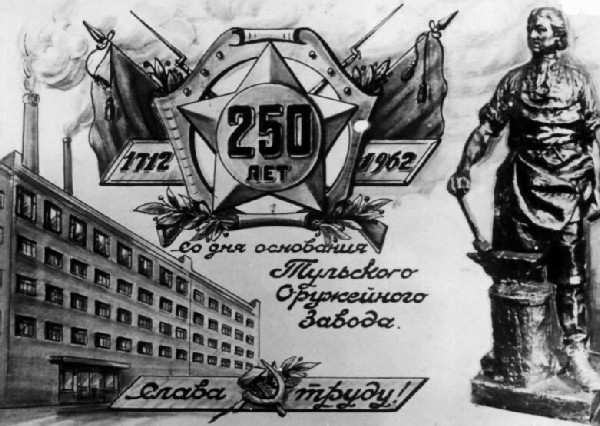
He stood there until 1941.
They decided to hide him from German shells and bombs. According to one version, the workers of the plant removed the sculpture and released it to the bottom of the Upa River or simply hid it on the territory of the plant. According to another version, the monument was evacuated to the Urals in Mednogorsk. Most likely, the first version is more correct, tk. platforms at that time were not enough even for the removal of factory equipment.
After the Great Patriotic War, a monument to Peter I was erected on the territory of TOZ. In 1962, during the celebration of the 250th anniversary of the plant, the monument was moved to the square near the plant management building, next to the bridge over the Upa River, where it still stands.
